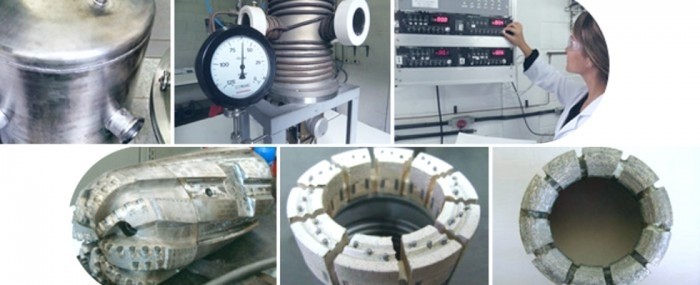
Brazilian firm leads the application of synthetic diamonds in dentistry
03 de novembro de 2017Clorovale Diamantes Indústria e Comércio, a Brazilian company based in São Paulo State, was founded in 1997 by a group of researchers affiliated with the National Space Research Institute (INPE). Trading as CVDVale, the firm pioneered the application of synthetic diamonds technology in the development of ultrasonic drills for dental use.
The foundation of the company is associated with a grant from Sao Paulo Research Foundation - FAPESP, through its Innovative Research in Small Business Program (PIPE), which made the use of ultrasonic drills in dental care a feasible goal.
The origins of CVDentus date from the early 1990s, when the firm's four founders - Vladimir Trava-Airoldi, Evaldo Corat, Luiz Gilberto Barreta and Luis Francisco Bonetti - began working to ensure that INPE, where they were employed as researchers, could master the technology to produce synthetic diamonds for use in satellites as heat sinks and solid lubricants.
One of their aims with this initiative, which was supported by FAPESP, was to found startups that would develop new applications for the technology, leveraging the unique properties of CVD diamonds. At that time, Trava-Airoldi had just returned to INPE after completing postdoctoral research in molecular physics at NASA. "I went there precisely to find out how they were able to convert the knowledge derived from space research into innovations with a broad social impact," he says.
It took five years for CVDVale to commercialize its first dental drill tip. Through CVDentus technology, these entrepreneurs developed dental drill tips with bactericidal properties that enable ultrasonic drills to be used not only to remove caries without bleeding and practically without pain but also to drill alveolar bone in preparation for implants without the risk of injuring soft tissue. The device is almost soundless and requires no anesthetic in 70% of cases.
CVDVale's know-how is based on the production of high-strength synthetic diamonds (CVD, which stands for crystals formed through Chemical Vapor Deposition), with the same physical and chemical properties as natural diamonds, as well as coatings made of diamond-like carbon (DLC) - a non-crystalline material with properties similar to those of CVD diamonds - for use in the oil, mining and automotive industries.
While working in INPE, the researchers succeeded in increasing the hardness of DLC, increasing the speed at which CVD diamonds are synthesized, and greatly enhancing the adhesion of both materials to some of the substrates on which they are "grown", such as molybdenum, steel and titanium, which ultimately extended their industrial applications. The first was the use of DLC as a solid lubricant on the surfaces of satellite moving parts, where it performed far better than the imported materials used until then.
Seven PIPE-funded projects later, the firm makes ultrasonic drills, tens of models of drill tips, and two burr shanks, one for alveolar bone and the other for teeth.
Multiple-use technology
Trava-Airoldi points some of the properties of synthetic diamonds that enables them for dental application. They have the lowest friction coefficient of all solid materials coupled with high thermal conductivity so that they are effective for rapid heating or cooling. They are excellent electrical insulators, but they can also serve as semiconductors depending on how they are doped. Other properties include a broad optical transmission spectrum, significant resistance to chemical corrosion, and biocompatibility. They also have bactericidal properties when doped with certain nanoparticles.
Their potential applications are therefore numerous, ranging from microelectronic appliances to cutting tools and anti-friction coatings in automotive and aircraft engines, parts, and recipients used in the chemical industry, glass and ceramics processing, and the production of optical protection film, among many others.
In addition to the products mentioned, CVDVale currently produces to order self-sharpening diamond bits for drilling water, gas and oil wells. It also coats any metal surface with DLC to enhance its strength, adhesion, corrosion resistance, solid lubrication, biocompatibility, bactericidal effects or anti-coagulant action, in accordance with the customer's requirements, in all cases by including different nanoparticles in the coating.
Recognition
The CVDentus technology enabled CVDVale in 2009 to join a group of 36 startups selected to receive investment financing from Criatec, a seed capital fund established by BNDES, the national development bank, with additional contributions from Banco do Nordeste do Brasil (BNB).
The technology is patented and has won several awards, such as the 2003 prize for the best product in the Southeast Region from FINEP, the Brazilian Innovation Agency, and the 2011 prize in the category Innovative Inventor, as well as an award from the World Intellectual Property Organization (WIPO) for the world's best inventions, also in 2011.
The collaboration has already led to 12 patents and more than 250 scientific articles published in international journals, not to mention the world's first courses in ultrasonic dentistry, delivered at the University of São Paulo (USP).
Trava-Airoldi emphasizes the close collaboration with INPE and its role in boosting CVDVale's business. "Both sides benefit," he says. "The firm advances thanks to the knowledge created at INPE, especially with the three Thematic Projects supported by FAPESP. And INPE's research benefits from the knowledge created at CVDVale."
The thematic projects quoted by researcher are "Scientific studies and innovation application on CVD diamond, DLC and carbon nanostructures obtained by chemical vapor deposition technique", "New materials, studies and applications of CVD diamond, diamond-like-carbon (DLC) and nanostructured carbon obtained by chemical vapor deposition" and "New materials, studies and innovative applications for CVD diamonds and diamond-like carbon (DLC)".
